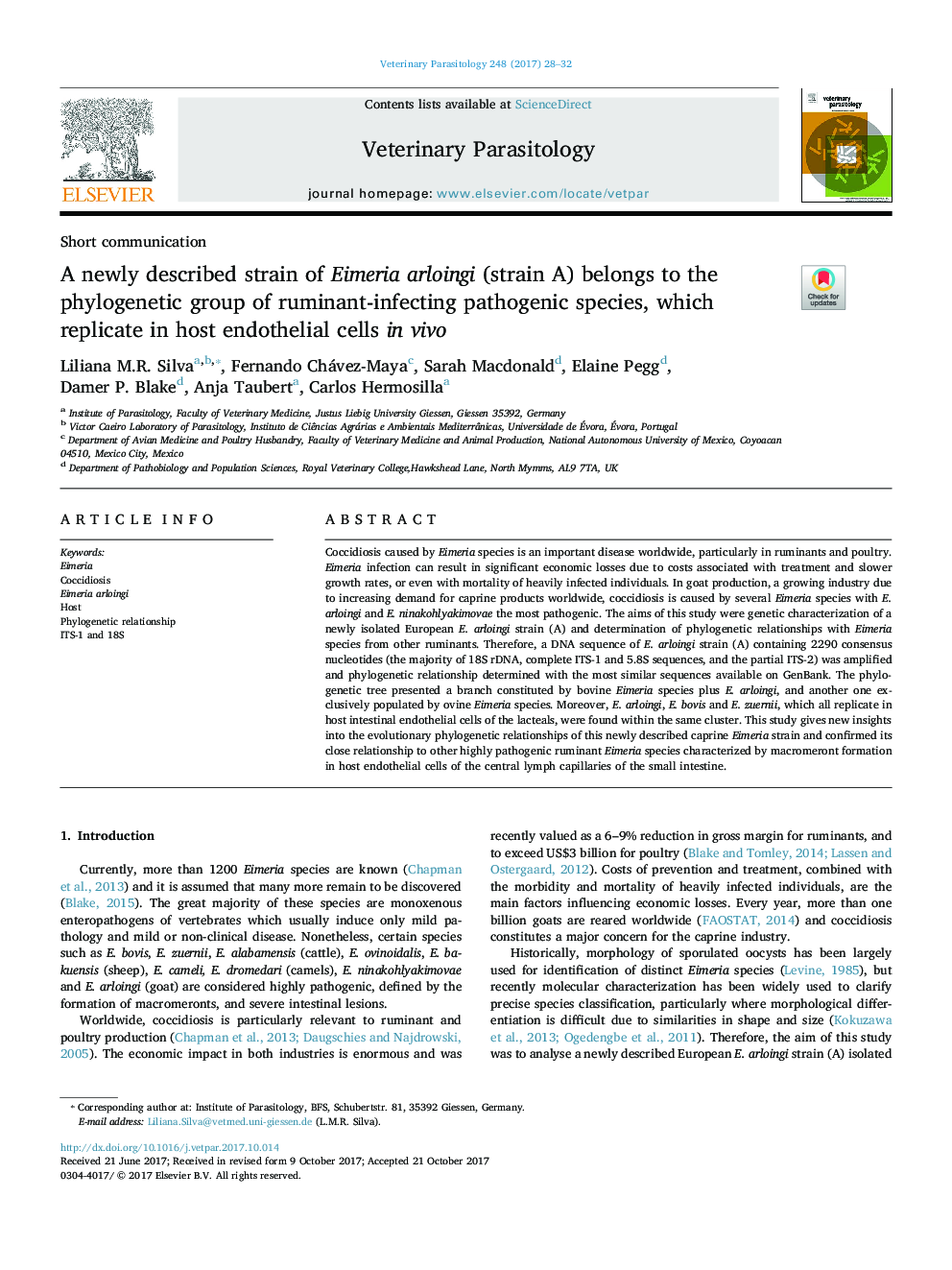| Article ID | Journal | Published Year | Pages | File Type |
|---|---|---|---|---|
| 8506224 | Veterinary Parasitology | 2017 | 5 Pages |
Abstract
Coccidiosis caused by Eimeria species is an important disease worldwide, particularly in ruminants and poultry. Eimeria infection can result in significant economic losses due to costs associated with treatment and slower growth rates, or even with mortality of heavily infected individuals. In goat production, a growing industry due to increasing demand for caprine products worldwide, coccidiosis is caused by several Eimeria species with E. arloingi and E. ninakohlyakimovae the most pathogenic. The aims of this study were genetic characterization of a newly isolated European E. arloingi strain (A) and determination of phylogenetic relationships with Eimeria species from other ruminants. Therefore, a DNA sequence of E. arloingi strain (A) containing 2290 consensus nucleotides (the majority of 18S rDNA, complete ITS-1 and 5.8S sequences, and the partial ITS-2) was amplified and phylogenetic relationship determined with the most similar sequences available on GenBank. The phylogenetic tree presented a branch constituted by bovine Eimeria species plus E. arloingi, and another one exclusively populated by ovine Eimeria species. Moreover, E. arloingi, E. bovis and E. zuernii, which all replicate in host intestinal endothelial cells of the lacteals, were found within the same cluster. This study gives new insights into the evolutionary phylogenetic relationships of this newly described caprine Eimeria strain and confirmed its close relationship to other highly pathogenic ruminant Eimeria species characterized by macromeront formation in host endothelial cells of the central lymph capillaries of the small intestine.
Related Topics
Life Sciences
Agricultural and Biological Sciences
Animal Science and Zoology
Authors
Liliana M.R. Silva, Fernando Chávez-Maya, Sarah Macdonald, Elaine Pegg, Damer P. Blake, Anja Taubert, Carlos Hermosilla,
